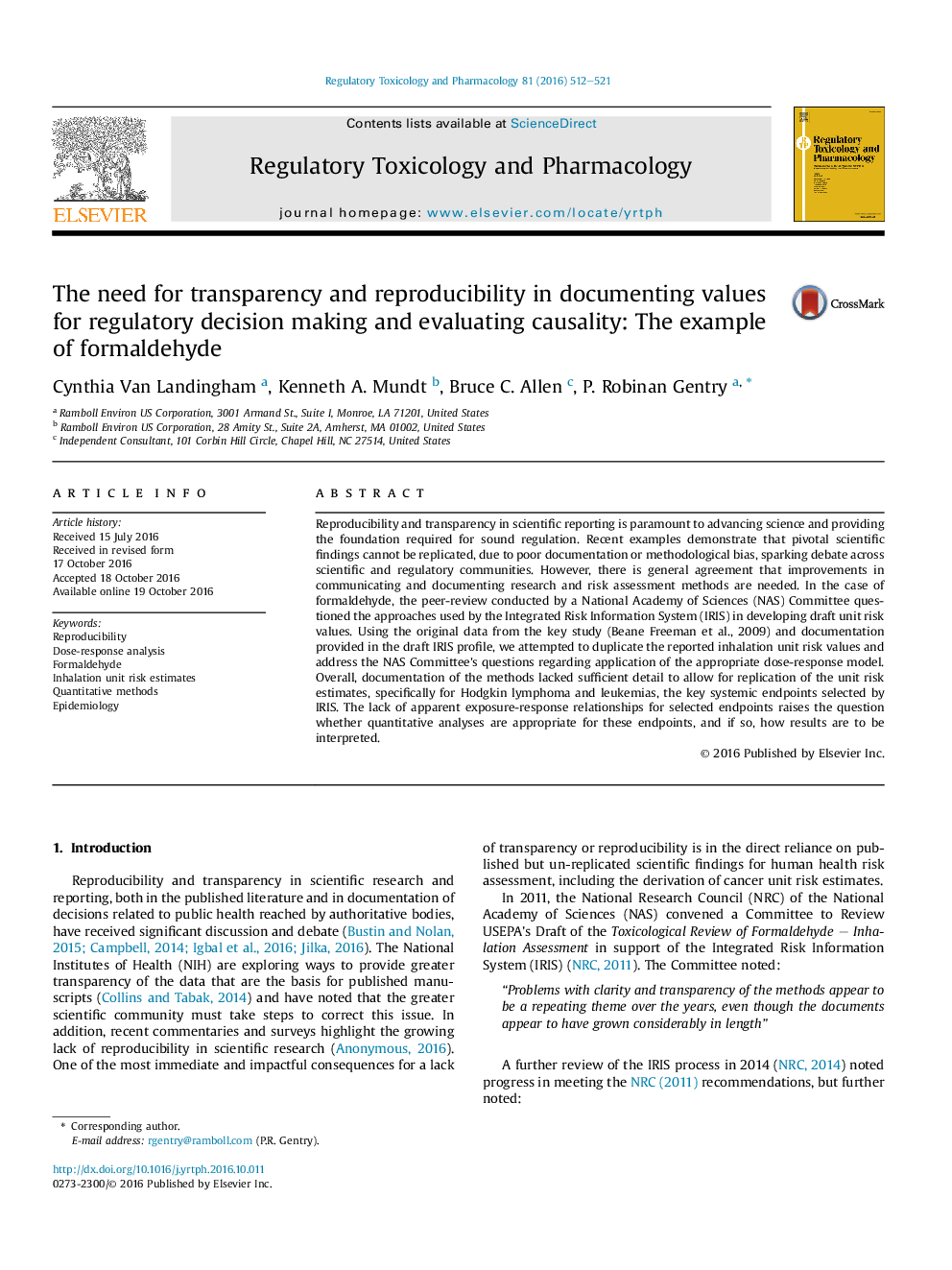| کد مقاله | کد نشریه | سال انتشار | مقاله انگلیسی | نسخه تمام متن |
|---|---|---|---|---|
| 5855830 | 1562122 | 2016 | 10 صفحه PDF | دانلود رایگان |
- Improvements are needed in reproducibility and transparency in scientific reporting.
- The formaldehyde IRIS profile is an example where transparency has been questioned.
- Following documentation in the IRIS document, replication of IURs is not possible.
- Lack of dose-response for some endpoints raises questions about recommended IURs.
Reproducibility and transparency in scientific reporting is paramount to advancing science and providing the foundation required for sound regulation. Recent examples demonstrate that pivotal scientific findings cannot be replicated, due to poor documentation or methodological bias, sparking debate across scientific and regulatory communities. However, there is general agreement that improvements in communicating and documenting research and risk assessment methods are needed. In the case of formaldehyde, the peer-review conducted by a National Academy of Sciences (NAS) Committee questioned the approaches used by the Integrated Risk Information System (IRIS) in developing draft unit risk values. Using the original data from the key study (Beane Freeman et al., 2009) and documentation provided in the draft IRIS profile, we attempted to duplicate the reported inhalation unit risk values and address the NAS Committee's questions regarding application of the appropriate dose-response model. Overall, documentation of the methods lacked sufficient detail to allow for replication of the unit risk estimates, specifically for Hodgkin lymphoma and leukemias, the key systemic endpoints selected by IRIS. The lack of apparent exposure-response relationships for selected endpoints raises the question whether quantitative analyses are appropriate for these endpoints, and if so, how results are to be interpreted.
Journal: Regulatory Toxicology and Pharmacology - Volume 81, November 2016, Pages 512-521
